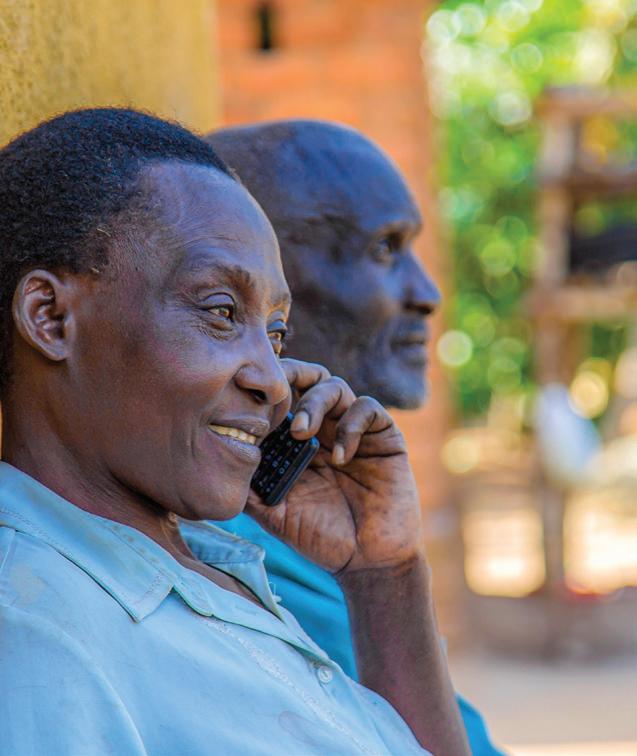
2 minute read
Rebranding as Ripple Effect
Rebranding as
Ripple Effect
Advertisement
We are proud that as Send a Cow the lives of 2.5 million people have been transformed, but it was evident we wouldn’t be able to reach our goal for growth without change.
That meant a new name, new look and new ways of talking about what we do. In June of this year we launched our new name Ripple Effect, which builds on the strong heritage of the Send a Cow brand. Extensive research proved that we needed to show in the clearest and simplest way how we support a thriving rural Africa, and that the name Send a Cow was holding us back.
Data collected in 2021-22 revealed that for every family we work with, another three families benefit. What this clearly shows is that every investment – of time, money, and staff – creates a ripple which spreads far beyond our programmes.
Guy Singh-Watson, Founder of Riverford Organic and Ripple Effect patron:
“Farmers listen to other farmers. Whether in Africa or the UK, the best way to improve farming practice is to show another farmer like them making it work on a farm like theirs; each farmer starting a ripple effect of learning and improvement. “The sustainable farming Ripple Effect has developed and spread is the most inspiring I have seen.”
As mobile phone usage extends in rural areas we’re using it to support our work with remote farmers, and extend our reach.
How do we create a ripple effect?
By Catherine Mwangi, Head of Monitoring and Evaluation
Our programmes are designed to maximise the spread of impact. These methods include self-help groups, peer farmer training, copy farming, pass-on gifts of seeds and livestock, interventions on gender and social inclusion, and community savings and loans groups.
Every farmer we work with understands that change is not just for them and their household. If they are the only ones doing well, and their neighbours are struggling, they can’t sell surplus produce to them. They may have to lend them money, and give them food, and no-one will go far.
Creating and working with groups is our great strength. We don’t tell them what to do. Some groups decide that as well as learning together, and lending together, they will buy assets for some of the group members. Some of the self-help groups grow and join cluster-level associations (CLAs), and some develop into cooperatives. We also work with local government officials, who learn and understand our methods. All this is vital because our projects will come to an end, but this knowledge will continue.
How do we measure our ripple effect?
It’s easy to make ambitious claims. Our donors, partners and national governments need to be able to trust that we deliver what we say we do. What we evaluate is the multiplier from “direct participants” (who receive training and support directly from us, or one of our delivery partners)








